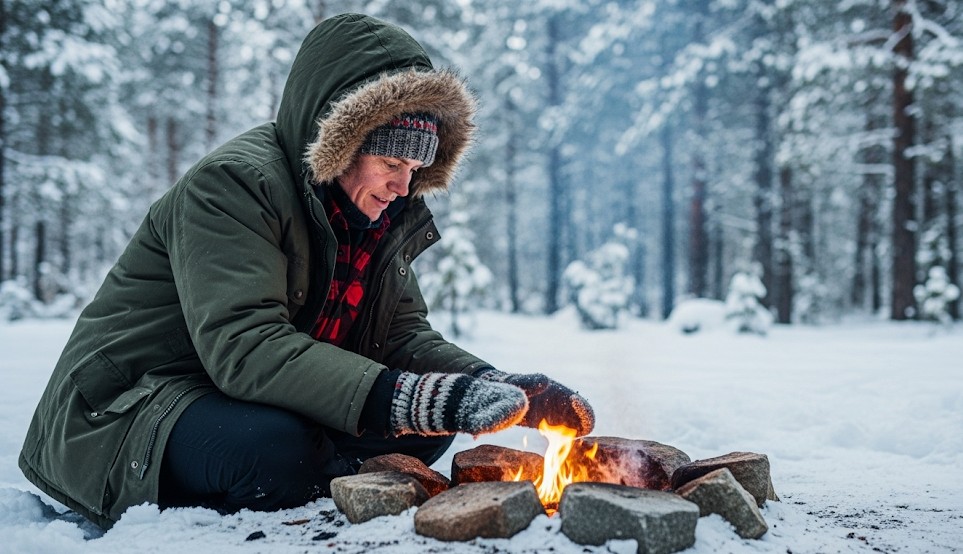Cold Weather Survival Basics

Objective
Stay warm, dry, and functional in sub-freezing environments by managing moisture, wind, and energy.
Scenario (Example)
Example: Unplanned overnight at −8°C with 20 km/h wind; one partner is sweat-soaked.
Layer System
- Base (wicking) — carry a dry spare.
- Mid (insulation) — avoid compression under straps.
- Shell — vent early to prevent sweat.
- Extremities — hat, neck gaiter, glove system, wool socks.
Step-by-Step
- Wind break + shell on; swap to dry base.
- Insulate from ground; sit pad or bough bed.
- Decide hot-wet vs. cold-dry based on move vs. stop.
- Pitch low A-frame; close ends with brush.
- Hot, lightly salty drink; keep fuel warm.
Hypothermia Signs
- Mild: shiver/fumble → shelter + warm drink.
- Moderate: clumsy gait → add heat, limit movement.
- Severe: shiver stops → gentle handling, trunk rewarm, evacuate.
Real Example
Adirondacks whiteout: team rotated hot drinks and used the “fumbler” test to trigger a warming stop before moving.
Checklist
- Dry base layer
- Low-pitch tarp
- Stove + windscreen
- Sit pad
- Headlamp, warm batteries
Contingencies
- Wet boots → plastic bag as vapor barrier.
- Wind shift → rotate shelter.
- Fuel low → prioritize hot drinks.
After-Action
Note where you sweated and which vents you missed; pre-stage spare base and stove.
← Previous | All Articles | Next →
